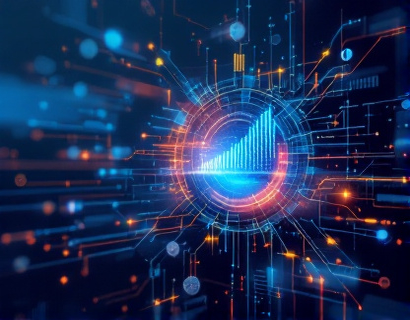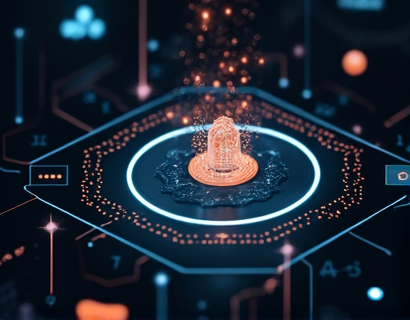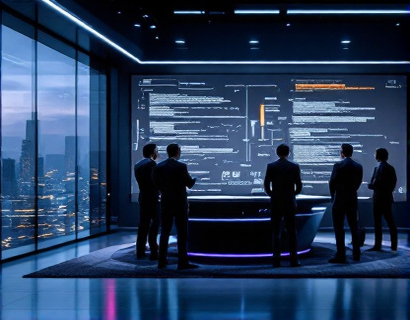AI-Powered Personalized Learning: Transforming Astronomy Education
In the realm of education, the integration of Artificial Intelligence (AI) is revolutionizing traditional learning methods, making complex subjects more accessible and engaging. Astronomy, with its intricate celestial mechanics and vast cosmic phenomena, stands to benefit immensely from this technological advancement. An AI-driven platform tailored for astronomy education offers personalized insights and interactive resources, transforming the way students and enthusiasts explore the universe. This article delves into how such a platform can revolutionize astronomy education, providing a profound and enjoyable learning experience through interactive exploration and expert insights.
Personalized Learning Paths
One of the most significant advantages of an AI-powered astronomy education platform is its ability to create personalized learning paths for each user. By analyzing a student's or enthusiast's knowledge level, learning pace, and areas of interest, the AI can curate a customized curriculum. This ensures that learners are challenged appropriately and can progress at their own speed, without feeling overwhelmed or under-stimulated. The AI continuously adapts the learning material based on the user's performance, ensuring a dynamic and tailored educational journey.
Interactive Exploration Tools
Interactive tools are a cornerstone of the AI-driven astronomy education platform. These tools allow users to engage with celestial bodies and phenomena in a hands-on manner. Virtual telescopes, 3D models of planets and galaxies, and interactive simulations of astronomical events provide an immersive experience. Users can explore the solar system, witness the birth and death of stars, and even simulate space missions. This interactive approach not only makes learning more enjoyable but also enhances understanding and retention of complex concepts.
Expert Insights and Resources
Access to expert insights is crucial for deepening one's understanding of astronomy. The AI platform connects learners with a wealth of resources created by leading astronomers, educators, and researchers. Video lectures, detailed articles, and comprehensive guides cover a wide range of topics, from basic astronomy to advanced theoretical concepts. These resources are regularly updated to reflect the latest discoveries and research, ensuring that learners have access to the most current information in the field.
Community Engagement
Learning astronomy is not just an individual pursuit; it thrives on community and collaboration. The AI platform fosters a vibrant community of astronomy enthusiasts, students, and professionals. Users can join forums, participate in discussions, and collaborate on projects. This community aspect provides a supportive environment where learners can ask questions, share findings, and gain insights from peers and experts. The sense of belonging to a community enhances the learning experience, making it more engaging and motivating.
Gamification and Motivation
To keep learners motivated and engaged, the platform incorporates elements of gamification. Badges, points, and leaderboards encourage users to complete courses, participate in challenges, and achieve milestones. These gamified elements not only make the learning process more fun but also provide a sense of accomplishment and progress. By recognizing and rewarding achievements, the platform motivates users to continue exploring and learning about astronomy.
Adaptive Assessment and Feedback
Traditional assessments often fail to capture the full range of a learner's understanding and progress. The AI-driven platform offers adaptive assessments that adjust in difficulty based on the user's performance. This ensures that tests are neither too easy nor too hard, providing a more accurate measure of knowledge. Additionally, the AI provides instant feedback, highlighting areas of strength and weakness. This immediate and personalized feedback helps learners identify gaps in their understanding and focus on areas that need improvement.
Multimedia Content and Visual Learning
Astronomy is a visual science, and the AI platform leverages this by incorporating a rich array of multimedia content. High-resolution images, videos, and animations bring celestial objects and phenomena to life. Visual learning tools, such as augmented reality (AR) and virtual reality (VR) experiences, allow users to explore the universe in a more immersive way. These multimedia resources cater to different learning styles, making the content more accessible and engaging for a diverse audience.
Real-Time Data and Live Events
One of the unique features of the AI platform is its ability to integrate real-time data from telescopes and space observatories around the world. Users can access live feeds of astronomical events, such as planetary alignments, meteor showers, and solar eclipses. This real-time data not only provides a front-row seat to cosmic events but also helps learners understand the dynamic nature of the universe. The platform can also schedule notifications for upcoming events, ensuring that users never miss a chance to observe and learn from these phenomena.
Customizable Learning Environments
Recognizing that each learner has unique preferences and needs, the AI platform allows for customizable learning environments. Users can personalize their dashboard, selecting the topics, resources, and tools they find most useful. The interface can be adjusted for optimal viewing and interaction, whether on a desktop, tablet, or smartphone. This flexibility ensures that the learning experience is tailored to the individual, enhancing comfort and productivity.
AI-Assisted Research and Projects
For advanced learners and enthusiasts, the platform offers AI-assisted research and project tools. These tools help users design and conduct their own astronomical research projects, from data analysis to hypothesis testing. The AI provides guidance and resources to help users navigate the research process, from selecting a topic to publishing findings. This hands-on research experience is invaluable for those looking to contribute to the field of astronomy and develop critical scientific skills.
Language and Accessibility Support
To make astronomy education accessible to a global audience, the AI platform supports multiple languages and accessibility features. Users can interact with the platform in their preferred language, breaking down language barriers and making the content more inclusive. Accessibility features, such as text-to-speech, screen readers, and adjustable text sizes, ensure that learners with disabilities can fully participate in the educational experience.
Continuous Learning and Skill Development
The AI platform is designed to support continuous learning and skill development in astronomy. As users progress, the platform introduces more advanced topics and complex concepts, ensuring that learners are constantly challenged and growing. The AI tracks the user's progress over time, providing a comprehensive overview of their learning journey. This continuous approach to education prepares learners for further studies, careers in astronomy, or a lifelong passion for the subject.
Conclusion
The integration of AI in astronomy education marks a significant leap forward in making this fascinating field more accessible and engaging. By offering personalized learning paths, interactive exploration tools, expert insights, and a supportive community, the AI-driven platform transforms the way we learn about the universe. Whether you are a student just starting out or an enthusiast looking to deepen your knowledge, this platform provides the resources and tools needed to explore the cosmos with confidence and curiosity. Embrace the future of astronomy education and embark on an extraordinary journey through the stars.











































